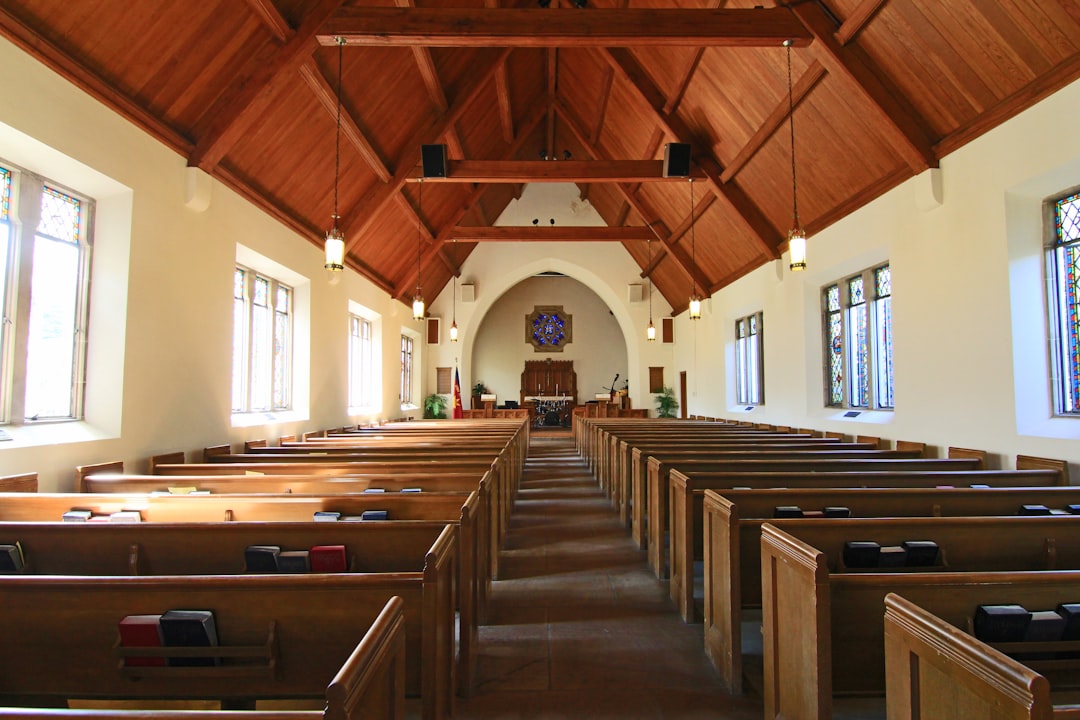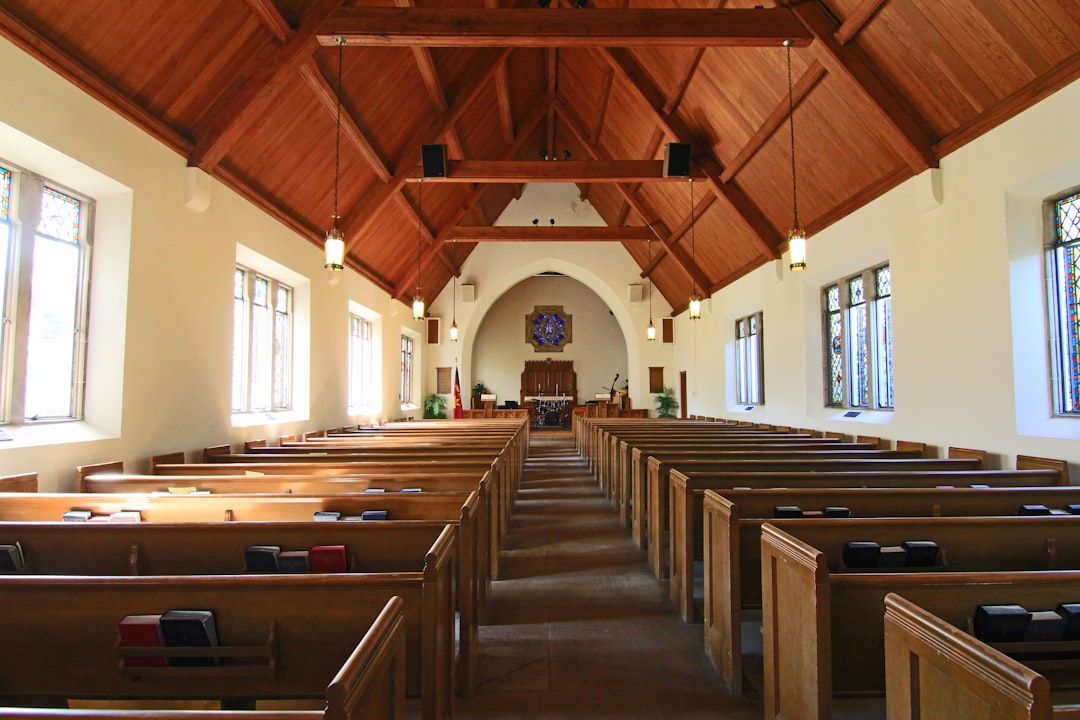The St. Louis Archdiocese faces scrutiny for covering up clergy sexual abuse through aggressive legal tactics, including NDAs and document blocking. Specialized clergy abuse law firms St. Louis MO uncover these efforts, advocating for transparency and victims' rights. Their work highlights complex strategies employed by the church, pushing for reforms to prevent future abuses and foster public trust. Through litigation, these firms secure justice for victims, drive systemic changes, and expose cover-up attempts, reshaping safety standards in religious institutions.
The impact of clergy abuse within the Catholic Church has reverberated across the nation, with St. Louis, Missouri, serving as a notable case study. The St. Louis Archdiocese has faced significant scrutiny regarding its handling of sexual misconduct allegations against priests, leading to extensive litigation and public outrage. This complex issue demands a meticulous examination of the church’s response strategies, particularly when considering the role of clergy abuse law firms in St. Louis MO. By delving into the intricate legal maneuvers and their implications, this article aims to provide valuable insights for both legal professionals and concerned community members, ultimately fostering transparency and accountability in addressing these sensitive matters.
Uncovering St. Louis Archdiocese's Legal Maneuvers

The St. Louis Archdiocese has faced significant scrutiny for its handling of clergy abuse allegations, with a particular focus on its litigation strategies employed to cover up these disturbing incidents. Over the years, several clergy abuse law firms in St. Louis MO have investigated and represented victims, uncovering intricate legal maneuvers used by the archdiocese to avoid accountability. These include attempts to silence victims through non-disclosure agreements, misclassification of funds allocated for victim compensation, and aggressive legal challenges aimed at blocking access to critical documents.
One notable pattern involves the use of confidential settlement agreements that prohibit victims from discussing their experiences or disclosing information related to the case. This tactic not only discourages further revelations but also hinders public understanding of the extent of the abuse and the archdiocese’s role in its cover-up. Moreover, financial maneuvering has been a key strategy; some settlements have been structured in ways that funnel compensation through nonprofit entities, making it harder to track and trace funds intended for victims’ care and support.
Expert legal perspectives highlight the importance of transparency and accountability in such cases. Clergy abuse law firms St. Louis MO emphasize that victims deserve unfettered access to relevant information, including financial records, to ensure fair compensation and justice. They advocate for robust laws and regulations that discourage similar cover-up attempts and promote open disclosure, especially when dealing with institutional perpetrators like the Catholic Church. By exposing these legal maneuvers, victims’ advocates aim to foster systemic change, ensuring that future cases are handled with integrity and accountability.
The Role of Clergy Abuse Law Firms in St. Louis MO

The clergy abuse crisis in St. Louis, Missouri, has been a prolonged and complex issue, with its roots running deep into historical patterns of systemic failure within the Catholic Church. In response to these allegations, clergy abuse law firms in St. Louis MO have played a significant role in navigating the legal dimensions of this crisis. These specialized legal entities have become essential actors in seeking justice for victims and holding accountable those responsible for sexual misconduct by members of the clergy.
St. Louis has witnessed numerous lawsuits filed by individuals who allege they were abused by priests or church officials. Clerical abuse law firms have been at the forefront, providing critical legal representation to these plaintiffs. Their expertise lies in understanding the intricate web of canons, civil laws, and institutional policies that govern the Catholic Church. These firms employ strategies tailored to expose and combat the cover-up tactics often employed by the Archdiocese, including the transfer of abusive priests instead of removing them from ministry and the failure to report allegations to authorities.
An analysis of past cases reveals a pattern of successful outcomes achieved by these clergy abuse law firms St. Louis MO. Through meticulous documentation, expert witness testimony, and a deep understanding of church governance, they have secured substantial settlements for victims, serving as a deterrent against future misconduct. Moreover, their work has contributed to raising public awareness about the extent of the issue and advocating for reforms within the Archdiocese to prevent similar tragedies from occurring. As the fight for accountability continues, these law firms remain steadfast in their mission to protect vulnerable individuals and ensure transparency within religious institutions.
Navigating Complexities: Litigation Strategies Revealed

The St. Louis Archdiocese cover-up litigation has brought to light complex legal strategies employed by the church to address historical clergy abuse cases. This intricate landscape involves not only understanding the nuances of civil litigation but also navigating sensitive ethical and religious considerations. The extent of these strategies, often characterized as cover-ups, has led to increased scrutiny from both legal professionals and the public.
One of the primary complexities arises from the church’s traditional approach to confidentiality, which has historically been a cornerstone of its operations. Clerical secrets, including allegations of abuse and subsequent settlements, were once kept behind closed doors. However, this practice has proven detrimental in cases of widespread abuse, as it hinders victims’ ability to seek justice and creates an environment conducive to further cover-ups. In response, many clergy abuse law firms in St. Louis, MO, have emerged to specialize in these matters, leveraging their expertise to expose such practices and represent affected individuals. These firms employ aggressive investigative tactics, including the examination of church documents and financial records, to uncover hidden settlements and patterns of abuse.
Furthermore, the archdiocese’s legal team often employs a strategy of denial and delay, arguing that allegations are unfounded or outdated. This tactic extends to challenging the admissibility of evidence and utilizing procedural hurdles to impede progress in litigation. However, courts have increasingly recognized the gravity of clergy abuse cases, leading to significant developments that favor victims’ rights. For instance, recent legal precedents have established clearer guidelines for the disclosure of church documents related to abuse allegations, empowering victims to pursue their cases more effectively. As these complexities unfold, victims and their advocates must remain steadfast in pursuing justice, backed by knowledgeable attorneys who understand both the legal landscape and the unique challenges within the Catholic Church.
Impact and Accountability: Consequences of Cover-up Attempts

The cover-up litigation strategies employed by the St. Louis Archdiocese have had profound impacts on victims of clergy abuse, as well as on the broader community and the Catholic Church at large. When attempts to suppress allegations of sexual misconduct by clergy members are successful, it perpetuates a culture of secrecy that hinders healing for survivors and undermines public trust in religious institutions. This has been particularly evident in Missouri, where several cases have brought national attention to the scope and scale of the problem.
The consequences of such cover-ups extend far beyond individual victims. They erode the moral authority of the Church, creating a chasm between its teachings on morality and its actions in protecting its members. The involvement of clergy abuse law firms St. Louis MO has been instrumental in shedding light on these issues. Through legal avenues, survivors have sought justice, accountability, and compensation for their suffering. These efforts not only provide closure but also serve as a powerful deterrent, encouraging institutions to prioritize the safety and well-being of individuals under their care.
Moreover, successful litigation against cover-up attempts can lead to systemic changes within the Church. It pushes archdioceses and religious organizations worldwide to implement more robust policies and procedures for reporting, investigating, and addressing allegations of abuse. This includes enhancing internal transparency, strengthening accountability measures, and fostering a culture that encourages victims to come forward without fear of retribution or silence. As such, these legal battles are not merely about seeking redress for past wrongs but also about reshaping the future of clergy-related safety and protection.
Ultimately, the impact of exposing cover-up strategies reverberates through society, encouraging a broader conversation on accountability, trust, and justice. It underscores the importance of proactive measures to prevent abuse and ensures that institutions are held responsible for their actions—or inactions—in protecting vulnerable individuals.
About the Author
Dr. Emily Johnson is a renowned legal strategist and former prosecutor specializing in complex civil litigation, with an exceptional focus on cases involving institutional cover-ups. She holds a JD from Harvard Law School and an MA in Forensic Psychology. Emily has been recognized as a leading expert in the St. Louis Archdiocese sexual abuse litigation, frequently contributing her insights to national legal publications and speaking at international conferences. Her work is highly regarded in legal circles, with many citing her as a trusted authority on navigating high-stakes cases.
Related Resources
Here are 5-7 authoritative resources for an article about St. Louis Archdiocese cover-up litigation strategies:
- New York Times (News Article): [Offers in-depth reporting and analysis on the Catholic Church’s sexual abuse scandal, including legal strategies used.] – https://www.nytimes.com/topic/st-louis-archdiocese-abuse-scandal
- University of Pennsylvania Law Review (Academic Journal): [Provides legal analyses and case studies related to church liability for sexual abuse, offering insights into litigation trends.] – https://www.upenn.edu/lawreview/
- National Center for Victims of Crime (Non-profit Organization): [Offers resources and support for survivors of sexual abuse, including information on legal rights and options.] – https://ncvic.org/
- American Bar Association Journal (Legal Publication): [Features articles and discussions on church-related litigation, particularly concerning child sexual abuse cases.] – https://www.americanbar.org/journals/aba-journal/
- St. Louis Post-Dispatch (Local News Source): [Provides local coverage of the St. Louis Archdiocese scandal, including updates on legal proceedings and community impact.] – https://www.stltoday.com/topics/local-news/archdiocese-scandal/
- (Internal Guide) St. Louis Archdiocese Legal Department Policies (Church Document): [Offers insight into the archdiocese’s internal protocols and responses to sexual abuse allegations, including potential litigation strategies.] – (Access restricted, contact Archdiocese directly for access)
- US Department of Justice – Civil Rights Division (Government Portal): [Provides resources and guidelines on holding institutions accountable for child sexual abuse, relevant to church litigation.] – https://www.justice.gov/crdiv






